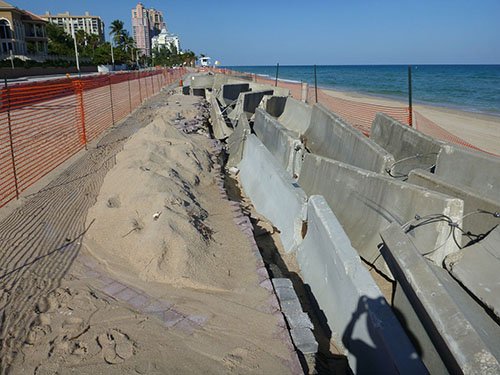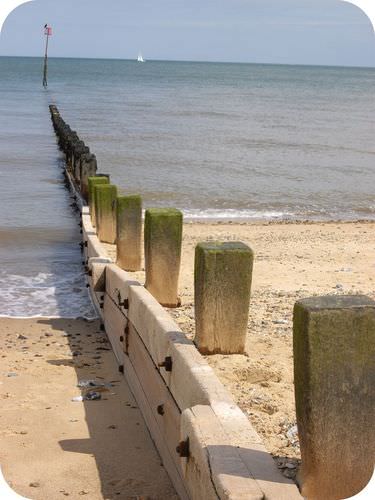Shore Protect Team Fundamentals Explained
Table of Contents8 Easy Facts About Shore Protect Team ExplainedThe Best Strategy To Use For Shore Protect TeamSee This Report about Shore Protect TeamOur Shore Protect Team IdeasThe Greatest Guide To Shore Protect TeamNot known Facts About Shore Protect TeamThe Basic Principles Of Shore Protect Team
Decline in building worth: As the area tourism is influenced by erosion, so then is the economy. Purchasers are much less likely to look for a beach home that can be destroyed anytime by the upcoming flooding and erosion emergency. Subsequently, property value can go down tremendously and influence the entire region.Whether a coastline is simply small and jampacked or has to close entirely for the safety of the ecological community and nearby residential properties, this substantially affects tourism. Subsequently, neighborhood economic situations are impacted (https://link-boy.org/details.php?id=346312). Threat of injury: The enhanced danger of flooding and architectural failings triggers an increased danger of injury to neighboring vacationers and area members

is home to even more than 84,240 miles of coastline with 41% of it revealed to the open ocean. Coastal engineers are in fee of protecting the shore against modifications by decreasing the destructive impacts of both natural and synthetic incidents. Coastline stabilization is straight pertaining to their work. Beachfront resorts: Since coastline disintegration impacts tourism, it affects the success of waterside hotels.
The Shore Protect Team PDFs
Coastal commercial services: No travelers means no service. Coastal state parks: State parks that exist along shorelines are at danger of damages.
Soft stabilization is a better option for the atmosphere and even more sustainable overall. Tough stabilization uses manufactured structures as defense to regulate erosion. Usually, these frameworks are installed at ideal angles or parallel to stop sand motion and minimize the force of waves. Many types of tough stablizing like seawalls and sheet steel are not excellent for shoreline stabilization.
Unknown Facts About Shore Protect Team
There's additionally inadequate proof of their effectiveness depending on the kind of shoreline and local problems. Difficult stabilization strategies have a tendency to be more hard to mount and don't match the natural visual, protruding like an aching thumb and hurting regional ecological communities in many situations. Beach sustenance is the process of adding lost sand and debris back to coastlines after erosion has occurred.
TrapBags aid in the process of beach sustenance by protecting all-natural communities and allowing plants to grow. While this process can be costly and is not irreversible, the pros have a tendency to outweigh the disadvantages. TrapBag barriers deal several residential properties that make them optimal for coastal and riverbank erosion protection. They're: Environmentally pleasant: You can use indigenous dirt both to border and to fill the TrapBags.

Examine This Report about Shore Protect Team
Easy to mount: Ease of installation means TrapBags can be deployed quickly in case of an emergency. They can also be installed without any kind of heavy equipment. Cost effective: TrapBags are optimal for both tiny and big locations of shoreline. They offer a budget friendly remedy to cover jobs of any dimension.
Incorporated with a high construction expense, this has resulted in increasing use various other soft engineering coastal monitoring alternatives such as coastline replenishment. Seawalls are constructed from numerous products, a lot of frequently reinforced concrete, stones, steel, or gabions. Other feasible building and construction products consist of plastic, wood, light weight aluminum, fiberglass composite, and biodegradable sandbags made of hemp and coir. The suitable seawall style counts on location-specific elements, including bordering disintegration procedures. There are three major kinds of seawalls: vertical, bent, stepped, and mounds (see table below). A report released by the United Nations Environment Programme (UNEP) recommends that the tsunami of 26 December 2004 caused much less damage in the locations where all-natural barriers were present, such as mangroves, reef or seaside greenery.
All-natural barriers, such as coral reefs and mangrove forests, avoid the spread of tsunamis and the circulation of seaside waters and minimized the flood and surge of water. A cost-benefit strategy is an efficient way to establish whether a seawall is proper and whether the advantages deserve the cost.
8 Simple Techniques For Shore Protect Team
A seawall is a static feature which can contravene the dynamic nature of the coast and impede the exchange of debris in between land and sea. The table below sums up some positive and adverse results of seawalls which can be utilized when contrasting their effectiveness with various other coastal management alternatives, such as coastline nutrition. [] Advantages and drawbacks of seawalls according to Short (1999) Advantages Disadvantages Lengthy term service in contrast to soft beach nutrients.

This can create beaches to dissipate, providing them useless for beach goers. Typically, seawalls can be a successful method to control coastal disintegration, yet only if they are created well and out of products that can endure the force of ongoing wave energy. Some understanding is needed of the seaside processes and morphodynamics specific to the seawall location.
Some Ideas on Shore Protect Team You Should Know
The ideal seawall design counts on location-specific elements, consisting of bordering erosion procedures. There are three main types of seawalls: upright, rounded, stepped, and piles (see table below).
All-natural obstacles, such as coral reefs and mangrove woodlands, avoid the spread of tidal waves and the flow of seaside waters and reduced the flooding and surge of water. A cost-benefit strategy is an efficient way to identify whether a seawall is proper and whether the benefits are worth the expense.
The Only Guide for Shore Protect Team
A seawall is a static feature which can clash with the dynamic nature of the coast and hinder the exchange of sediment in between land and sea. Benefits and drawbacks of seawalls according to Short (1999) Benefits Downsides Long term option in comparison to soft beach sustenance.
This can cause beaches to dissipate, providing them worthless for beach goers. Usually, seawalls can be a successful means to regulate seaside erosion, yet only if they are built well and out of products that can hold up against the pressure of ongoing wave energy.